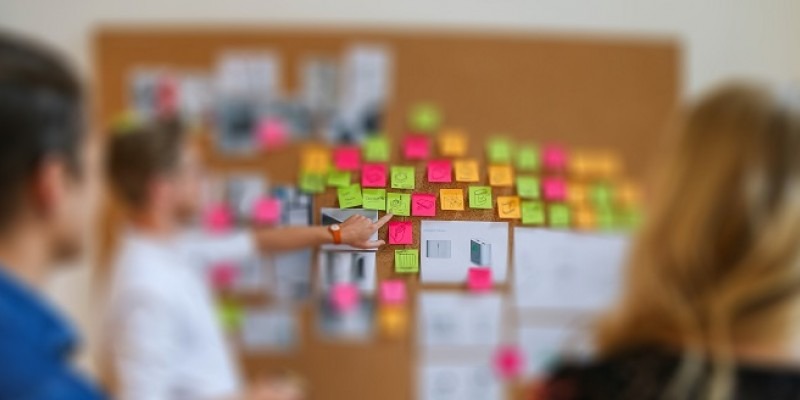
Design Thinking helps businesses to create user-centric products and services by discovering insights into user needs, applying these insights to their business model and generating innovative ideas.
In this five-part series, Sarah Dickins, Business West’s design innovation specialist gives advice on how Design Thinking techniques can help you to develop products around user need.
In part four Sarah looks at ‘Ideation’, which is the creative process of generating ideas. Often it is tempting to kick-off a project with this phase, but as with any good recipe - the right combination of ingredients is essential to ensure a good outcome. So, I would recommend reading the first three phases of the process before this: Success, Discovery and Interpretation.
Sarah shares tips to generate the best ideas from your Ideation session.
The Ideation Phase
Do your ideas sessions bring up the same ideas again and again?
A few years ago, I remember one particularly frustrating workshop with the R&D team of a global selfcare brand. We had an interesting brief, enthusiastic team and plenty of coffee. But we kept going round in circles.
So what was the problem?
I had spent the previous couple of weeks sifting through pages and pages of detailed market research, so there was clearly not a lack of research.
But, when we came to the creative session, there was very little to spark our imagination. It looked as if we had all the right ingredients for a good session, but unfortunately the market research had not produced the kind of insights that we needed for the session.
Not willing to make the same mistake twice, next time we worked with the company we insisted on including a short phase of qualitative user research to help inspire the Ideation.
It made all the difference - this time - a single session produced three new product ideas which were commercialised by the company.
For me, it was a powerful reminder of how the quality of ideas are dependent upon the quality of the inputs that we take into the session.
Protecting Creativity
One of the challenges with running creative sessions is that although the creative process consists of periods of divergent and convergent thinking, these two types of thinking don’t happily co-exist.
When discussing ideas for new features or new products, our natural instinct tends to be to assess each idea as we go along. But critiquing (convergent thinking) tends to shut down creative (divergent) thinking. To come up with good ideas for product we need to ruthlessly separate these two elements.
I usually present teams with a set of ‘rules’ before the session:
- No idea is a bad idea
- Capture the idea and move on
- Build on other ideas
- Aim for lots of ideas (the number depends upon the context, but think 50-100)
‘It’s not my job to think about company strategy’
A jaded employee can be a very dangerous thing. It is easy to assume that some people are born with enthusiasm and hope - and that others are not. Often businesses take on optimistic students and juniors and are frustrated when after a number of years, these individuals become jaded.
Building regular Ideation sessions into your product development, involving the whole team, is a brilliant way to enable employees to appreciate the bigger picture and to boost enthusiasm amongst your team. This may arguably be more valuable than the individual ideas that come out of the process. Of course, employees will need to see that the results of session are implemented to reap the benefits.
This does require a brave move for the CEO as by nature the process does flush out any unfounded pet ideas along the way. But managed well, giving the opportunity for the wider workforce to contribute can - in time - completely transform the culture of a business.
Collaborations
Due to the semi-structured approach, Ideation sessions can also be a good way to bring cohesive decision-making between teams or organisations with different priorities. As team members are ‘taken’ on the journey, the process is an effective way to evidence decision making, both for those who attend the session - and for other stakeholders. Content from David Kelly, IDEO, [International Design & Consulting firm]
Content from David Kelly, IDEO, [International Design & Consulting firm]
In this blog, I have shared a few simple tips to help ‘protect’ the creative process to optimise Ideation. Carefully facilitated creative sessions with the wider team can also help to give your company culture a boost.
The next phase of the Design Thinking process is Experimentation, which involves testing early ideas with users.
More in the series:
Read Part 1: Design Thinking for Business Success: Design Thinking for Innovation
Read Part 2: Why you should begin every project with Discovery: Design Thinking
Read Part 3: The Interpretation Game: Design Thinking for Innovation
Read Part 5: How to fail fast: Design Thinking for Innovation
About the author
Sarah Dickins, Business West’s design innovation specialist, has over the past five years worked with established R&D teams in companies such as Sony Electronics, Unilever and Walgreens Boots Alliance, helping them to innovate and create new products.
- Log in to post comments
